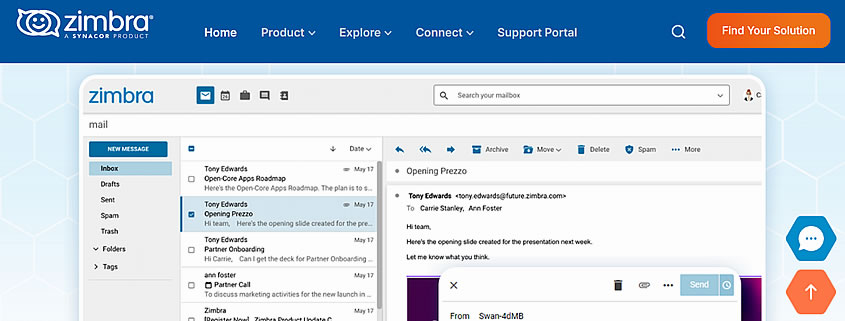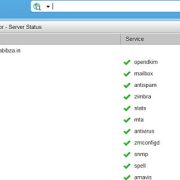Step-by-Step Guide to Setting Up a Zimbra Mail Server for Your Business
In today’s fast-paced business environment, communication is everything. While cloud-based email services like Gmail and Microsoft 365 dominate the space, many businesses are turning to open-source alternatives for greater control, security, and cost efficiency. One such solution is the Zimbra Collaboration Suite (ZCS)—a robust, flexible, and scalable platform that allows businesses to manage their email infrastructure in-house.
This guide offers a detailed, step-by-step walkthrough to setting up a Zimbra mail server for your business, including technical tips, real-world use cases, and best practices for long-term maintenance.
🔍 Why Zimbra for Business Email?
Zimbra is used by organizations around the world, from universities to telecom companies and government agencies. Here’s why:
-
Cost-effective: No expensive licensing fees like Microsoft Exchange.
-
Feature-rich: Offers email, calendar, file sharing, mobile sync, and more.
-
Customizable: Open-source nature allows for deep customization.
-
Secure: Built-in antivirus, anti-spam, SSL, and S/MIME support.
-
Scalable: Works for SMBs and large enterprises alike.
Real-world examples:
-
Vodacom Tanzania uses Zimbra to provide email services to thousands of employees across East Africa.
-
Polish Ministry of Finance adopted Zimbra to replace Microsoft Exchange, citing cost savings and better control over internal data.
🧰 Requirements Before You Start
Hardware & System:
-
OS: Ubuntu 20.04/22.04 or CentOS 7/8 (64-bit)
-
CPU: 4+ cores
-
RAM: 8 GB minimum (16 GB recommended for production)
-
Disk: At least 120 GB
-
Network: Static IP, properly configured domain DNS
Software:
-
OpenSSH
-
Java 11
-
Required packages like
wget,curl,unzip,net-tools, anddnsutils
🏗️ Step 1: Set Up Your Server
-
Update system packages:
-
Install required dependencies:
-
Set hostname:
-
Edit /etc/hosts:
📥 Step 2: Download and Install Zimbra
-
Download the Zimbra installer:
-
Extract the installer:
-
Run the installer:
-
Follow prompts to install Zimbra components:
-
zimbra-core
-
zimbra-ldap
-
zimbra-mta
-
zimbra-store
-
zimbra-logger
-
zimbra-snmp
-
zimbra-spell
-
Accept license terms and allow the installer to resolve dependencies.
⚙️ Step 3: Post-Installation Configuration
-
Access Zimbra Admin Console:
-
URL:
https://mail.yourdomain.com:7071 -
Default login:
admin@yourdomain.com
-
-
Set administrator password:
Follow the installer prompts or set it via: -
Create mail accounts:
Use the Admin Console GUI or CLI: -
Configure domain:
Set domain-specific policies, spam filters, and mailbox quotas.
🔒 Step 4: Configure DNS and SSL
DNS Records (must be pre-configured):
-
A Record:
mail.yourdomain.com→ your server IP -
MX Record:
0 mail.yourdomain.com -
SPF Record:
v=spf1 mx ~all
Enable SSL/TLS with Let’s Encrypt:
Deploy SSL in Zimbra:
📲 Step 5: Mobile & Desktop Integration
Zimbra supports IMAP/SMTP, ActiveSync, and CalDAV/CardDAV:
-
Outlook: Use Zimbra Connector for Outlook (ZCO)
-
Thunderbird: Use native IMAP and calendar extensions
-
Mobile Devices: Enable ActiveSync via Admin Console
Enable ActiveSync:
🛡️ Step 6: Security Enhancements
-
Enable SPF/DKIM/DMARC
-
Rate-limiting & Anti-spam:
ConfigurePostfixandAmavissettings in Admin Console -
Two-factor authentication: Enable in Zimbra Network Edition for added login security
📊 Step 7: Monitoring and Backups
Zimbra logs:
-
/opt/zimbra/log/mailbox.log -
/var/log/zimbra.log
Performance monitoring:
-
Web Admin Console dashboard
-
zmstatcommand-line reports
Backup options:
-
Zimbra Network Edition includes built-in backup
-
For Community Edition, use external backup tools like
rsync,zmbak
🎯 Real-World Example: Zimbra in Action
Case Study: African Wildlife Foundation (AWF)
Facing high email downtime and licensing costs with Exchange, AWF migrated to Zimbra. The result?
-
30% reduction in email-related IT support tickets
-
$12,000 annual savings in licensing
-
Better mobile sync for field employees
Zimbra’s offline functionality and web client enabled smooth internal communication—even in low-bandwidth regions.
✅ Final Setup Checklist
| Task | Description |
|---|---|
| ✅ | Server OS & packages installed |
| ✅ | Zimbra downloaded & installed |
| ✅ | DNS records verified |
| ✅ | SSL certificate implemented |
| ✅ | User mailboxes created |
| ✅ | Admin Console configured |
| ✅ | Mobile/Desktop clients tested |
| ✅ | Backups and logs in place |
📝 Conclusion
Zimbra gives you enterprise-level email control with minimal overhead. With proper setup, maintenance, and SSL/DNS security, your organization can enjoy reliable, scalable email without recurring cloud fees. Whether you’re running a small business, school, or enterprise, Zimbra remains a trusted, customizable platform worth exploring.
Need help with high-availability Zimbra setups or migrations? Let us know—we can help tailor a solution to your business needs.




Leave a Reply
Want to join the discussion?Feel free to contribute!